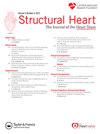Advancing the Contemporary Multidisciplinary Heart Valve Team: Update on Priorities for Clinicians and Programs
IF 2.8
Q3 CARDIAC & CARDIOVASCULAR SYSTEMS
引用次数: 0
Abstract
The multidisciplinary heart team (MDT) has been foundational to the rapid advancement of treatment options for valvular heart disease (VHD). Initially designed to guide treatment decisions for patients with aortic stenosis and procedural success of transcatheter aortic valve implantation, the MDT was intended to provide a responsive mechanism to meet the needs of patients and programs. Some of the unintended consequences of guideline endorsement and regulatory requirements have diminished the perceived value and threatened the engagement of team members. To maintain its impact, the VHD MDT must evolve to reflect contemporary priorities. For patients with aortic stenosis, the concept of the MDT must expand to address the significant barriers to timely detection, diagnosis, and referral and leverage its expertise to increase program capacity to accelerate access to care. The comprehensive mitral and tricuspid valve clinical pathway is in its infancy. For this patient group, the membership of the core MDT must be strengthened by the addition of expertise to support imaging diagnostics and procedural guidance, specialty team members who can guide the individualized clinical management of complex VHD, enhanced coordination of care and patient-centered processes, and consideration of unanswered clinical concerns. A recalibrated perspective on the key principles guiding the MDT for clinicians and programs offers opportunities to make the most of lessons learned by promoting quality of care and building a VHD collective and culture that can meet patients’ needs along their journey of care while prioritizing a nimble, tailored, efficient, and high-impact approach.
推进当代多学科心脏瓣膜团队:临床医生和项目优先事项的更新
多学科心脏团队(MDT)是快速发展瓣瓣膜心脏病(VHD)治疗方案的基础。MDT最初旨在指导主动脉瓣狭窄患者的治疗决策和经导管主动脉瓣置入术的成功,旨在提供一种响应机制,以满足患者和项目的需求。指南认可和法规要求的一些意想不到的后果已经降低了感知价值并威胁到团队成员的参与。为了保持其影响力,VHD MDT必须不断发展,以反映当代的优先事项。对于主动脉瓣狭窄患者,MDT的概念必须扩大,以解决及时发现、诊断和转诊的重大障碍,并利用其专业知识提高项目能力,加速获得护理。全面的二尖瓣和三尖瓣临床路径尚处于起步阶段。对于这一患者群体,核心MDT的成员必须通过增加专业知识来支持成像诊断和程序指导,专业团队成员可以指导复杂VHD的个性化临床管理,加强护理和以患者为中心的过程的协调,并考虑未解决的临床问题来加强。对临床医生和项目指导MDT的关键原则进行重新调整后,可以通过提高护理质量和建立VHD集体和文化来最大限度地吸取经验教训,从而满足患者在护理过程中的需求,同时优先考虑灵活、量身定制、高效和高影响力的方法。
本文章由计算机程序翻译,如有差异,请以英文原文为准。
求助全文
约1分钟内获得全文
求助全文
来源期刊

Structural Heart
Medicine-Cardiology and Cardiovascular Medicine
CiteScore
1.60
自引率
0.00%
发文量
81
 求助内容:
求助内容: 应助结果提醒方式:
应助结果提醒方式:


